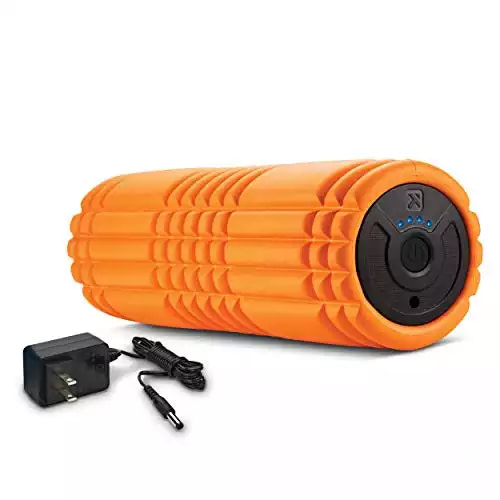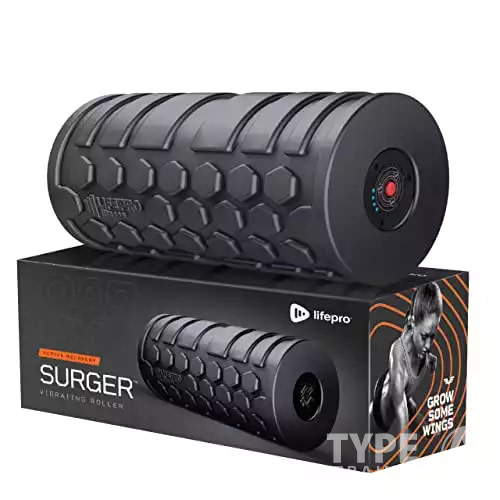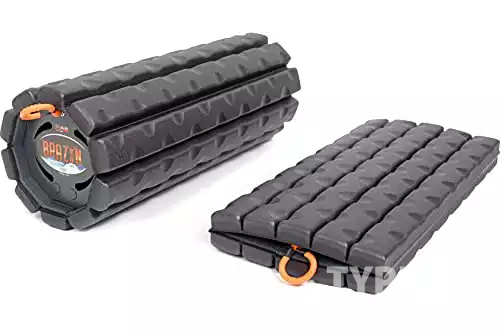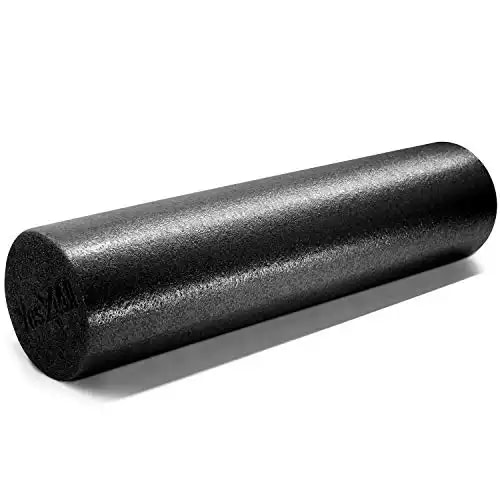Choosing the right running gear is essential for anyone who wants to pursue running as a hobby or a sport. Running gear includes
Understanding your running needs is the first step to choosing the right running gear. Consider factors like your running frequency, the type of terrain you run on, your foot shape, and your running goals. For example, if you run on trails, you may want to invest in trail running
Choosing the right running gear can make a significant difference in your running experience. It can help prevent injuries, improve your performance, and make running more enjoyable. In this article, we’ll provide tips and recommendations for choosing the right running gear, including
Key Takeaways
- Understanding your running needs is crucial to choosing the right running gear.
- Choosing the right running gear can prevent injuries and improve your performance.
- Consider factors like foot shape, running frequency, and terrain when selecting running gear.
Understanding Your Running Needs
Popular posts:
To choose the right running gear, it’s important to understand your running needs. This includes your personal preferences, the type of shoe you need, the running surface you’ll be on, the mileage you’ll be running, the terrain you’ll encounter, the training you’re doing, and any races you plan to participate in.
Personal Preference
When it comes to running gear, personal preference is key. Some runners prefer minimalist gear, while others prefer more support and cushioning. Some runners like bright colors, while others prefer more neutral tones. Consider what makes you feel comfortable and confident when you’re running.
Type of Shoe
Choosing the right running shoe is essential for preventing injury and ensuring a comfortable run. Consider your foot type (neutral, pronated, supinated), your running style (heel striker, midfoot striker, forefoot striker), and the type of running you’ll be doing (road, trail, track). Visit a specialized running store to get your gait analyzed and choose the best
Running Surface
The surface you’ll be running on can affect the type of gear you need. Road runners may prefer lightweight
Mileage
If you’re running high mileage, you’ll need gear that can withstand the wear and tear of frequent use. Look for
Terrain
The terrain you’ll be running on can also affect the type of gear you need. If you’ll be running on hilly terrain, consider
Training
Your training regimen can also affect the type of gear you need. If you’re doing speed work, you may need lightweight
Races and Marathons
If you plan to participate in races or marathons, consider gear that will help you perform your best. This may include lightweight
Evening Runs
If you’ll be running in the evening, consider gear that is designed to keep you visible to drivers and other runners. This may include reflective clothing, LED lights, and
By understanding your running needs, you can choose gear that will help you perform your best and stay comfortable and safe while you run.
Choosing the Right Running Shoes
Choosing the right running
Understanding Pronation
Pronation is the natural inward rolling motion of the foot while running or walking. Understanding your pronation type is crucial in choosing the right running
Types of Running Shoes
There are different types of running
Key Features in Running Shoes
When choosing running
Trying and Buying Running Shoes
It is recommended to try on running
In conclusion, choosing the right running
Types of Running Shoes
There is a wide variety of running shoe styles available to meet the unique needs of different runners. Choosing the right shoe type is important to help improve performance and reduce injury risk. Below are some of the most popular categories of running footwear:
Daily Trainers/Neutral Shoes
Neutral Running
Neutral running
Neutral running
This makes neutral running
Since neutral running
Their versatility and suitability for the natural foot strike of most runners explains why neutral running
| Product Image | Product Name / Primary Rating / Price | Primary Button |
|---|---|---|
|
||
|
||
|
||
|
||
|
||
|
||
|
||
|
Stability Running Shoes
Stability
Stability
Upgraded cushioning systems and midsole architecture in stability
If you experience mild to moderate overpronation symptoms like shin splints, stability
The extra arch support and guidance of stability
| Product Image | Product Name / Primary Rating / Price | Primary Button |
|---|---|---|
|
||
|
||
|
||
|
||
|
||
|
||
|
||
|
||
|
Motion Control Running Shoes
Here is a rewritten version for your post:
Motion control running
Motion control
The maximum support structure of motion control
By heavily controlling excessive pronation through the sole design, motion control
| Product Image | Product Name / Primary Rating / Price | Primary Button |
|---|---|---|
|
||
|
||
|
||
|
||
|
||
|
Racing flats
Here is a rewritten version for your post:
Racing flats are a specialized category of running shoe designed specifically for short-distance speed work and races. They feature ultralight construction with very little cushioning in order to minimize weight and maximize ground feel.
The thin, flexible soles of racing flats allow for a rapid foot strike and acceleration without extra bulk or heaviness. Their minimalist design emphasizes breathability, flexibility and low weight above all else.
Racing flats are best suited for distances up to 10K where top speed is critical, such as 5K races. Look for new models to improve upon breathability, flexibility and low weight in order to boost performance over short race distances.
Manufacturers focus on making racing flats as light, breathable and flexible as possible. Updated foam compounds and knit upper materials further enhance the racing experience by enabling maximum speed output. With their stripped-down design tailored for fast paces, racing flats remain the gold standard for speed-focused runners.
| Product Image | Product Name / Primary Rating / Price | Primary Button |
|---|---|---|
|
||
|
||
|
||
|
||
|
Trail Running Shoes
Here is a rewritten version focused on trail running
Trail running
Trail
Compared to road
While some trail
Whether for fastpacking on packed dirt paths or technical runs over rocky routes, trail
| Product Image | Product Name / Primary Rating / Price | Primary Button |
|---|---|---|
|
||
|
||
|
||
|
||
|
||
|
When choosing a pair of running
Minimalist Running Shoes
Minimalist running
The mm drop refers to how much higher the heel sits off the ground compared to the forefoot. Traditional running
True minimalist
Some
Higher drop
When choosing a minimalist shoe, keep in mind that it’s up to you how low (or high) you want to go in selecting your next pair. It’s important to ease into minimalist
Easing Into Minimalist Shoes
It’s important not to go from regular
- Start with just walking in them around the house to get used to their flexible feel.
- Gradually increase your distance over several weeks, such as a few runs of 1-2 miles each.
- Mix in runs in your old
shoes to avoid overuse injuries as muscles strengthen. - Consider
shoes with a 4-8mm drop as an intermediate step to ease the transition. - Listen to your body – don’t push through pain. It may take 6-12 months for a full adjustment.
- Drills like toe walks can strengthen foot muscles not used to barefoot running.
- Be wary of high impact exercises until adapted like long runs or speedwork.
Taking the time to slowly build up foot muscle memory and strength is key to safely transitioning to a more natural footstrike with minimalist
|
Primary Rating:
3.5
|
Primary Rating:
3.5
|
Primary Rating:
3.5
|
Primary Rating:
3.5
|
Primary Rating:
3.5
|
|
$109.00
|
N/A
|
$99.99
|
|
|
Selecting Appropriate Running Clothing
When it comes to running, selecting the right clothing can make a big difference in your overall performance and comfort. Here are some tips to help you choose the appropriate running clothing:
Running Jackets
Running shirts require breathable fabrics to keep runners cool on long runs. Look for lightweight materials that wick moisture away from the skin like Dri-FIT, COOLMAX and mesh panels. These allow sweat to evaporate to prevent overheating. Ventilation in high-heat areas like the back and underarms enhances heat and moisture escape.
Fit is also crucial for comfort. Loose shirts cause distraction while tight compression may chafe. Most find success with a trim fit that moves without constraint. Racerback straps stay in place better than sleeves. Reflective accents increase visibility in low light. Top shirts implement these aspects to excel through intense efforts and variable distances.
| Product Image | Product Name / Primary Rating / Price | Primary Button |
|---|---|---|
|
||
|
||
|
||
|
Running Shirts
The best running shirts use breathable, moisture-wicking fabrics like Dri-FIT and COOLMAX to keep runners cool. Look for lightweight, ventilated shirts with mesh panels or perforations on the back and underarms. These allow sweat to evaporate, preventing overheating. Fitting is also important – loose shirts flap while tight fits may chafe. Most find success with a form-fitting design that moves comfortably without constraint. Top shirts implement these features to boost comfort through long runs.
| Product Image | Product Name / Primary Rating / Price | Primary Button |
|---|---|---|
|
||
|
||
|
||
|
||
|
Running Shorts
Running shorts require comfortable, lightweight fabrics to keep runners cool on warm weather runs. Opt for seamless shorts to eliminate chafing from stitches. Built-in briefs provide coverage without added bulk. Moisture-wicking materials like nylon quickly evaporate sweat to maintain dryness. Multiple secure pockets stow essentials. Reflective hits increase low-light visibility. Top running shorts offer breathable construction along with these performance features to enhance comfort through all seasons.
| Product Image | Product Name / Primary Rating / Price | Primary Button |
|---|---|---|
|
||
|
||
|
||
|
||
|
Compression Shorts
| Product Image | Product Name / Primary Rating / Price | Primary Button |
|---|---|---|
|
||
|
||
|
||
|
||
|
||
|
Running Tights
Running tights provide coverage and insulation for cooler weather runs. Look for tights made of moisture-wicking fabrics that pull sweat away from the skin to prevent overcooling. Seamless construction eliminates chafing. Opt for tights with a tight fit through the legs but flexibility through the hips and waist to allow natural movement. Many runners prefer tights with zippered pockets and reflective details. The best tights implement four-way stretch and compression to support muscles without restriction through long distances.
Other Running Clothing Items
In addition to shirts, jackets, shorts, and tights, there are other clothing items that can help improve your running experience. Running socks are a must-have as they can help prevent blisters and provide extra cushioning. Avoid wearing cotton socks as they can trap moisture and lead to blisters. Sports bras are also important for women as they provide support and prevent discomfort while running.
Choosing Running Clothing Material
When choosing running clothing, it is important to consider the material. Performance fabrics like polyester, nylon, and spandex are ideal for running as they wick away sweat and keep you dry. Avoid wearing cotton as it can trap moisture and lead to discomfort.
Fashion Vs Function in Running Clothing
While it may be tempting to choose running clothing based on fashion, it is important to prioritize function over fashion. Running clothing should be designed to help you perform your best and keep you comfortable while running. Look for clothing items that are designed specifically for running and made from performance fabrics.
| Product Image | Product Name / Primary Rating / Price | Primary Button |
|---|---|---|
|
||
|
||
|
||
|
Sports Bras
The right sports bra provides crucial support for female runners. It reduces discomfort from breast movement during exercise. Look for bras made of moisture-wicking, quick-drying fabrics like nylon/spandex blends.
Fit is also key. Choose adjustable straps and multiple closures for customization. Compression styles securely cradle breasts allowing full range of motion, while avoiding tight bands that may dig in. Removable pads offer impact protection.
Support levels suit various activities. High-impact bras effectively contain large busts during high-impact exercise. Medium suits lower-impact activities like yoga. Low-impact styles work for stationary cycling or weightlifting.
Top athletic brands like Nike, Lululemon and Brooks offer styles tailored for needs. Different cuts and materials suit varying cup sizes and activities. Investing in supportive, comfortable options enhances the female athletic experience.
Material
Just like with running socks, material is crucial when it comes to sports bras. You want a material that is moisture-wicking, lightweight, and comfortable. Avoid cotton as it absorbs moisture and doesn’t dry quickly, which can lead to chafing and discomfort. Look for synthetic materials such as polyester, nylon, or spandex that will keep you cool and dry.
Support
The level of support you need depends on your cup size and the intensity of your workout. A good sports bra should keep your breasts supported and prevent them from bouncing during your run. Look for bras with adjustable straps and a wide band to provide extra support. Some bras also have molded cups or underwire for added support.
Comfort
Comfort is key when it comes to sports bras. You want a bra that fits well and doesn’t chafe or rub against your skin. Look for bras with flat seams and no tags to prevent irritation. Try on different styles and sizes to find the one that feels the most comfortable for you.
Style
Sports bras come in different styles, including compression, encapsulation, and a combination of both. Compression bras compress the breasts against the chest wall, while encapsulation bras have individual cups to support each breast. Combination bras offer both compression and encapsulation. Choose the style that feels the most comfortable and supportive for you.
Recommended Sports Bras
If you’re looking for some recommendations, check out this list below. Remember that everyone’s body is different, so what works for someone else may not work for you. Try on different styles and brands to find the one that works best for you.
| Product Image | Product Name / Primary Rating / Price | Primary Button |
|---|---|---|
|
||
|
||
|
||
|
||
|
||
|
||
|
Running Socks
Running socks are an essential part of any runner’s gear. They are designed to keep your feet dry, comfortable, and healthy while running for prolonged periods of time. Choosing the right running socks is just as important as selecting the right
When selecting the right running socks, there are several factors to consider. The material, size, length, thickness, and cushioning features are the main things to keep in mind.
The most important factor to consider when cherry-picking socks for running is the material. As a rule of thumb, steer clear of cotton. Cotton is spongy and absorbent, and once your feet get wet, they’ll stay wet. This makes for a miserable run and sets the ideal breeding ground for bacteria and blisters. Ideal running socks are made from synthetic materials such as acrylic, CoolMax, and polyester. Look for these in the ingredient list whenever you are purchasing new socks. Some high-performance socks are also designed with a mesh venting system.
When running, it’s essential to have athletic socks that fit properly. A pair that’s too large or too small can bunch up and sag, and won’t provide you with the right cushioning that is required. Your socks must be a perfect fit, especially under the arch of the foot and around the heel. They shouldn’t slide around. To make sure you have the right size, make sure that the heel portion of the socks perfectly lands on your heel without stretching. Also, your running socks should be worn fairly tight to the skin, but not so tight that they overstretch or restrict the movement of your toes.
Socks usually come in four different lengths: knee-length, crew-length, anklet, and socklet. Which length you go for depends on the weather, training intensity, and your own personal preferences.
Different athletic sock materials and styles will provide different levels of cushioning. Which type of sock you choose depends on your personal preference. Thick socks typically have extra padding in the heel and toes, which offers superior underfoot comfort, more cushioning, and blister protection, but might be a hurdle when trying to fit into a new pair. In general, thicker socks are most appropriate for cooler seasons. On the other hand, the thinner socks are lighter and tend to have a better road feel, but might result in excessive friction when running, especially if you’re prone to blisters. Generally, thin socks are ideal for hotter seasons.
Compression socks are designed with gradual compression, which improves blood flow to the muscles. This is believed to lessen muscle fatigue and speed up recovery following a workout. Some high-tech running socks are designed to mildly compress your muscles to enhance blood circulation, reducing fatigue, and speed up recovery time—all of which can help you run farther for longer and with less fatigue.
In summary, choosing the right running socks is essential to keep your feet healthy and happy. Consider the material, size, length, thickness, and cushioning features when selecting your running socks. The right pair can set the stage for a comfortable, pain-free workout experience.
Running Socks
| Product Image | Product Name / Primary Rating / Price | Primary Button |
|---|---|---|
|
||
|
||
|
||
|
Compression socks
| Product Image | Product Name / Primary Rating / Price | Primary Button |
|---|---|---|
|
||
|
||
|
Eco-Friendly and Sustainable Clothing
When choosing running gear, it is important to consider the impact it has on the environment. Eco-friendly and sustainable clothing materials can help reduce your carbon footprint and contribute to a healthier planet. Here are some options to consider:
Merino Wool Running Gear
Merino wool is a popular choice for running gear, thanks to its natural thermoregulating properties. It keeps you warm in cold weather and cool in hot weather, making it perfect for year-round use. Merino wool is also naturally odor-resistant, which means you can wear it multiple times before needing to wash it. Look for merino wool running gear that is certified as Mulesing-free to ensure animal welfare.
Bamboo Running Gear
Bamboo is a fast-growing and renewable resource, making it an eco-friendly choice for running gear. It is also naturally moisture-wicking, which means it can help keep you dry during your run. Bamboo running gear is also soft and comfortable, making it a great choice for those with sensitive skin.
Organic Cotton Running Gear
Organic cotton is grown without the use of harmful pesticides and chemicals, making it a more sustainable choice than conventional cotton. It is also biodegradable, which means it won’t contribute to landfill waste. Organic cotton running gear is soft, breathable, and comfortable, making it a great choice for those who prefer natural fibers.
Recycled Polyester Running Gear
Recycled polyester is made from post-consumer plastic bottles, reducing the amount of plastic waste in landfills. It also requires less energy and resources to produce than virgin polyester. Recycled polyester running gear is lightweight, breathable, and moisture-wicking, making it a great choice for high-intensity workouts.
Tencel Running Gear
Tencel is a sustainable fabric made from eucalyptus trees. It is produced using a closed-loop process, which means that 99% of the chemicals used in the process are recycled. Tencel running gear is soft, breathable, and moisture-wicking, making it a great choice for those who want a sustainable and comfortable option.
When choosing eco-friendly and sustainable running gear, it is important to consider the materials used and their impact on the environment. By choosing materials like merino wool, bamboo, organic cotton, recycled polyester, and Tencel, you can reduce your carbon footprint and contribute to a healthier planet.
Related
Wireless Earbuds
Music can be a great motivator for runners, and finding the right Wireless Earbuds is crucial to make sure you can enjoy your tunes while also staying safe on the road. Running Earbuds come in a variety of styles and designs, so it’s important to find a pair that suits your needs and preferences.
When choosing running Wireless Earbuds, consider the following factors:
- Comfort: You’ll be wearing your headphones for extended periods of time, so make sure they fit comfortably and securely. Look for headphones with adjustable ear hooks or over-ear designs that won’t slip out during your run.
- Durability: Running headphones should be able to withstand sweat, rain, and other outdoor elements. Look for headphones with an IPX rating of 4 or higher, which indicates water and sweat resistance.
- Sound quality: You want to be able to hear your music clearly without having to turn up the volume to dangerous levels. Look for headphones with noise isolation or noise-cancellation features to block out external noise.
- Safety: It’s important to stay aware of your surroundings while running, so choose headphones that allow you to hear ambient noise. Look for headphones with an open-ear design or that allow you to hear ambient noise while still enjoying your music.
Some of the most popular running Wireless Earbuds on the market include the Apple AirPods Pro, Jabra Elite 8 Active, Bose Sport Earbuds, and JBL Reflect Aero. Each of these headphones offers a unique set of features and benefits, so it’s important to choose the pair that best suits your needs.
When using running Wireless Earbuds, it’s important to take safety precautions. Always keep the volume at a safe level and be aware of your surroundings. Consider using only one earbud or using bone conduction Wireless Earbuds that allow you to hear ambient noise.
With the right pair of running headphones, you can enjoy your music while staying safe and comfortable on the road.
Headphones
While not directly related to heart rate monitors, it’s worth noting that wearing headphones while running can be dangerous. It’s important to choose headphones that allow you to hear your surroundings, such as bone conduction headphones or open-back headphones. Avoid using noise-canceling headphones or earbuds that completely block out external sounds.
| Product Image | Product Name / Primary Rating / Price | Primary Button |
|---|---|---|
|
||
|
||
|
||
|
||
|
||
|
||
|
Heart Rate Monitors
If you’re serious about running, a heart rate monitor is a valuable tool that can help you train more effectively and efficiently. By monitoring your heart rate during exercise, you can ensure that you’re working at the right intensity to achieve your goals. Here are some things to consider when choosing a heart rate monitor:
Types of Heart Rate Monitors
There are two main types of heart rate monitors: chest straps and wrist-based monitors. Chest straps are more accurate, but some people find them uncomfortable. Wrist-based monitors are more convenient, but may not be as accurate. Some monitors also come with built-in GPS, which can be useful for tracking your route and distance.
Key Features
When choosing a heart rate monitor, look for the following key features:
- Continuous and accurate heart rate tracking
- Heart rate display in beats per minute or as a percent of maximum heart rate
- Target zone feature with alerts to keep you at the desired intensity
- Calorie counter to track the number of calories burned during your workout
Best Heart Rate Monitors
There are many heart rate monitors on the market, but some of the best options for runners include:
- Polar H10 Heart Rate Monitor: This chest strap monitor is highly accurate and offers a range of features, including Bluetooth connectivity and a long battery life.
- Garmin Forerunner 945: This wrist-based monitor offers built-in GPS, music storage, and advanced training features.
- Wahoo TICKR FIT: This armband monitor is comfortable and accurate, making it a great option for those who don’t like chest straps.
Safety Considerations
While heart rate monitors can be a valuable tool for runners, it’s important to use them safely. Always warm up before using your monitor, and start at a low intensity before gradually increasing your pace. If you experience any chest pain or discomfort, stop using the monitor and consult a doctor.
Overall, a heart rate monitor can be a valuable tool for runners who want to train more effectively. By choosing the right monitor and using it safely, you can take your running to the next level.
|
Primary Rating:
3.5
|
Primary Rating:
3.5
|
Primary Rating:
3.5
|
Primary Rating:
3.5
|
Primary Rating:
3.5
|
|
$134.99
|
N/A
|
$104.95
|
|
$113.90
|
Running Watches
A running watch is an essential tool for any runner who wants to track their progress and improve their performance. With so many options available, it can be difficult to choose the right one for you. Here are some things to consider when selecting a running watch:
GPS
Most running watches come with GPS, which allows you to track your route and distance. Look for a watch with a fast and accurate GPS system, as this will ensure that your data is reliable.
Heart Rate Monitoring
Many running watches also have heart rate monitoring capabilities, which can be useful for tracking your fitness level and ensuring that you’re working out at the right intensity. Look for a watch with an accurate heart rate monitor that is comfortable to wear.
Battery Life
Battery life is an important consideration, especially if you plan to use your watch for long-distance runs or multiple workouts in a day. Look for a watch with a battery life that meets your needs.
Water Resistance
If you plan to run in the rain or sweat heavily, a water-resistant watch is a must. Look for a watch that is rated for water resistance and can withstand exposure to sweat and rain.
Additional Features
Some running watches come with additional features such as music playback, coaching programs, and social sharing capabilities. Consider which features are important to you and look for a watch that offers them.
When choosing a running watch, it’s important to consider your individual needs and preferences. Look for a watch that is comfortable to wear, easy to use, and offers the features that are most important to you. With the right running watch, you can track your progress, improve your performance, and achieve your fitness goals.
|
Primary Rating:
3.5
|
Primary Rating:
3.5
|
Primary Rating:
3.5
|
Primary Rating:
3.5
|
Primary Rating:
3.5
|
|
|
N/A
|
$349.90
|
N/A
|
|
Hydration Pack or Handheld Bottle
When choosing a hydration method, it often comes down to personal preference. However, handheld water bottles and waistpack bottles each offer advantages.
Handheld bottles allow carrying multiple drink options for flexibility. This lets runners switch between water, electrolyte drinks, and more during long efforts. Handhelds also provide a visual reminder to stay hydrated. Their lighter weight reduces fatigue, especially over long distances.
Waistpack bottles provide some of the same benefits as handhelds, with hands-free carrying. The waistpack distributes the weight around the hips for less back strain compared to shoulder-worn packs. Some versatile models even include pockets for essentials like phones, gels and ID.
Overall, handheld water bottles and waistpack bottles offer versatility, convenience and performance perks. Their straightforward designs simplify hydration needs for runs of all lengths. Both casual runners and racers can benefit from the flexibility and reminders they provide to stay properly fueled.
ation needs for runs of all lengths. Both casual runners and racers can benefit from the flexibility and reminders bottles provide to stay properly fueled.
Hydration Pack
|
Primary Rating:
3.5
|
Primary Rating:
3.5
|
Primary Rating:
3.5
|
Primary Rating:
3.5
|
|
$74.99
|
|
$78.04
|
|
Handheld Running Water Bottle
|
Primary Rating:
3.5
|
Primary Rating:
3.5
|
Primary Rating:
3.5
|
Primary Rating:
3.5
|
|
N/A
|
|
$28.00
|
$18.99
|
Waistpack Water Bottles
|
Primary Rating:
3.5
|
Primary Rating:
3.5
|
Primary Rating:
3.5
|
Primary Rating:
3.5
|
|
$59.95
|
N/A
|
|
N/A
|
Safety Gear
When it comes to running, safety should always be a top priority. Whether you’re running in the early morning or late at night, it’s important to make sure that you are visible to drivers and other pedestrians. Here are some essential safety gear items that you should consider when choosing your running gear.
Reflective Clothing
Reflective clothing is a must-have when it comes to running safety gear. These clothes are designed to reflect light from car headlights and other sources, making you more visible to drivers. Look for clothing that has reflective strips or panels on the front, back, and sides.
Running Lights
Running lights are another great way to stay visible during your runs. These lights can be attached to your clothing,
Running ID Tags
In case of an emergency, it’s important to have some form of identification on you. Running ID tags are a great way to provide essential information about yourself, such as your name, emergency contact, and any medical conditions. Look for tags that are lightweight and easy to wear, such as wristbands or shoe tags.
By incorporating these safety gear items into your running routine, you can help ensure that you stay safe and visible during your runs. Remember to always be aware of your surroundings and to follow basic safety guidelines, such as running against traffic and crossing at designated crosswalks.
Recovery Gear
After a long and intense run, your muscles need time to recover. This is where recovery gear comes in. Recovery gear can help you recover faster, reduce muscle soreness, and prevent injury. In this section, we will discuss some of the most popular recovery gear options for runners.
Foam Rollers
Foam rollers are one of the most popular recovery tools for runners. They are used to massage and stretch your muscles, which can help reduce muscle soreness and improve flexibility. Foam rollers come in different sizes, densities, and shapes. Some of the most popular foam rollers include:
- High-density foam rollers
- Grid foam rollers
- Vibrating foam rollers
When choosing a foam roller, consider your needs and preferences. High-density foam rollers are great for deep tissue massage, while grid foam rollers are perfect for targeting specific muscle groups. Vibrating foam rollers are great for increasing blood flow and reducing muscle soreness.
Compression Socks
Compression socks are another popular recovery tool for runners. They are designed to improve blood flow and reduce muscle soreness. Compression socks come in different sizes, materials, and compression levels. Some of the most popular compression socks include:
- Calf compression sleeves
- Full-length compression socks
- Graduated compression socks
When choosing compression socks, consider your needs and preferences. Calf compression sleeves are great for targeting specific muscle groups, while full-length compression socks are perfect for reducing muscle soreness in your entire leg. Graduated compression socks are great for improving blood flow and reducing muscle soreness.
| Product Image | Product Name / Primary Rating / Price | Primary Button |
|---|---|---|
|
||
|
||
|
Ice Packs
Ice packs are a great way to reduce muscle soreness and inflammation after a run. They can help reduce swelling and improve blood flow to the affected area. Ice packs come in different sizes and shapes. Some of the most popular ice packs include:
- Reusable gel packs
- Instant cold packs
- Ice bags
When using ice packs, make sure to wrap them in a towel or cloth to prevent skin damage. Apply the ice pack to the affected area for 15-20 minutes at a time, several times a day.
| Product Image | Product Name / Primary Rating / Price | Primary Button |
|---|---|---|
|
||
|
||
|
||
|
||
|
In conclusion, recovery gear is essential for any runner who wants to recover faster and reduce muscle soreness. Foam rollers, compression socks, and ice packs are just a few of the most popular recovery tools for runners. When choosing recovery gear, consider your needs and preferences, and always consult with a healthcare professional if you have any concerns.
Maintenance (proper care)
Proper care for running gear
Taking care of your running gear is crucial for ensuring that it lasts as long as possible and performs at its best. Here are some tips for proper care of your running gear:
- Follow the care instructions on the label: Most running gear comes with care instructions on the label. Follow these instructions to ensure that you are washing and drying your gear correctly.
- Wash your gear after each use: Sweat and bacteria can build up on your gear, causing it to smell and deteriorate faster. Wash your gear after each use to keep it clean and fresh.
- Use a mild detergent: Harsh detergents can damage the fibers in your gear. Use a mild detergent to clean your gear.
- Avoid fabric softeners: Fabric softeners can leave a residue on your gear, reducing its breathability and wicking capabilities.
- Hang dry your gear: Avoid using a dryer to dry your gear, as the heat can damage the fibers. Hang dry your gear instead.
When to replace running gear
No matter how well you take care of your running gear, it will eventually wear out and need to be replaced. Here are some signs that it’s time to replace your running gear:
- Holes or tears: If your gear has holes or tears, it’s time to replace it. These can be a safety hazard and can also cause your gear to lose its functionality.
- Fading or discoloration: Fading or discoloration can be a sign that your gear is starting to break down. It may also be a sign that the fabric is losing its UV protection.
- Loss of elasticity: If your gear has lost its elasticity, it may no longer fit properly or provide the support that you need.
- Smell: If your gear has a persistent odor, even after washing, it may be time to replace it. This can be a sign that bacteria has built up in the fabric.
- Worn out soles: If your running
shoes have worn out soles, they may no longer provide the support and cushioning that you need. Replace yourshoes when the soles are worn down or uneven.
By following these tips for proper care and knowing when to replace your running gear, you can keep your gear in top condition and perform at your best.
| Product Image | Product Name / Primary Rating / Price | Primary Button |
|---|---|---|
|
||
|
||
|
||
|
Frequently Asked Questions
What are the essential running gear for winter?
When running in colder weather, it is important to dress appropriately to stay warm and comfortable. Essential running gear for winter includes a base layer, a mid-layer, and an outer layer. A base layer made of moisture-wicking material will keep you dry and prevent chafing. A mid-layer made of insulating material will keep you warm, and an outer layer made of windproof and waterproof material will protect you from the elements. Other essential gear includes gloves, a hat, and thermal socks.
What are the must-have running gear for men?
The must-have running gear for men includes a good pair of running
What are the necessary running gear for a marathon?
When running a marathon, it is important to have the right gear to keep you comfortable and prevent injuries. Necessary running gear for a marathon includes a good pair of running
What are the recommended running gear for beginners?
If you are new to running, it is important to start with the basics and gradually build up your gear collection. Recommended running gear for beginners includes a good pair of running
What are the top running gear for women?
The top running gear for women includes a good sports bra, moisture-wicking socks, comfortable shorts or pants, and a moisture-wicking shirt. A supportive and comfortable sports bra is essential for female runners. Other important gear includes a water bottle or hydration pack, a GPS watch or fitness tracker, and a foam roller for post-run recovery. As you progress, you may want to invest in additional gear such as compression socks, a running belt or armband, and a heart rate monitor.
What are the morning running gear essentials?
When running in the morning, it is important to have the right gear to keep you comfortable and visible to others. Morning running gear essentials include a good pair of running
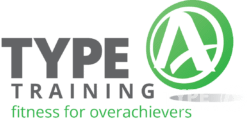
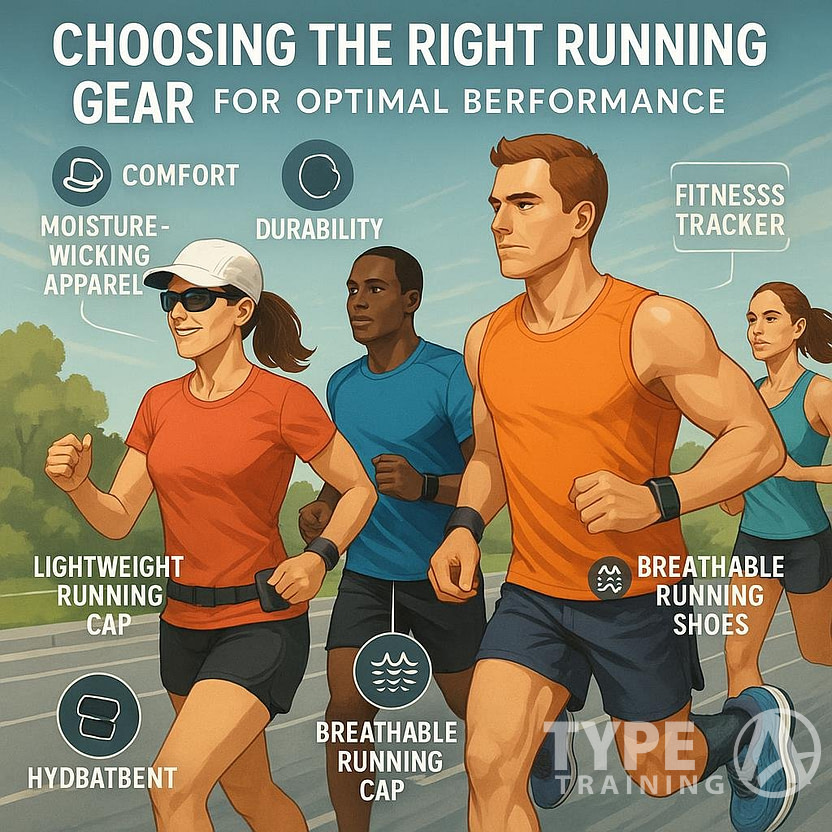




































































































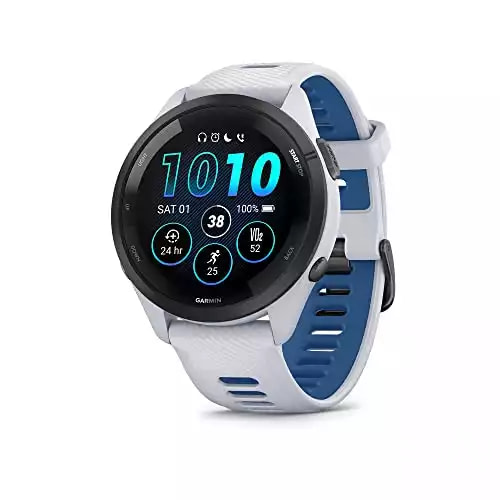
![Apple Watch Series 9 [GPS 41mm] Smartwatch Fitness Tracker, Blood Oxygen & ECG Apps](https://mlrsaszawtm3.i.optimole.com/cb:4PHY.45cbb/w:auto/h:auto/q:90/f:best/ig:avif/https://www.typeatraining.com/wp-content/uploads/2023/10/31xWycYXNmL._SL500_.webp)


















